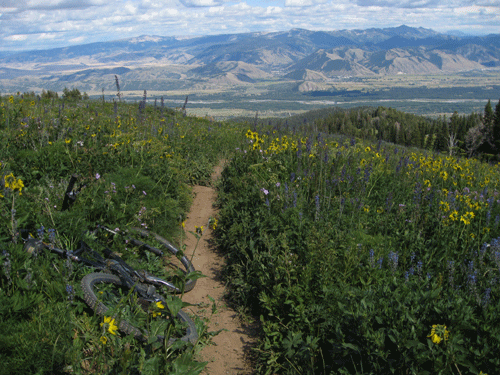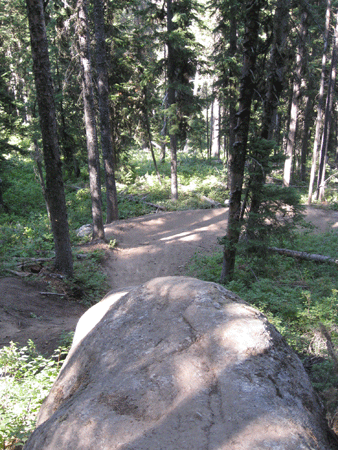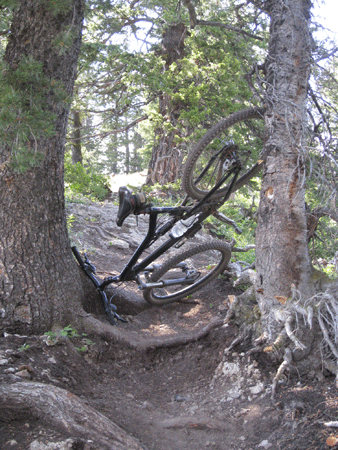I’m an avid mountain biker. Instead of going to the gym, I ride trails. The last time I bought a bike, I built it up piece by piece, meticulously researching every part on the internet. It took me three months to figure out exactly what I wanted, and I read hundreds of pages of blogs, forums and product reviews. This, in fact, was one of my seminal experiences in social media marketing, when I realized first-hand how much control businesses have lost over their brands.
Among the many dozens of web sites I visited, the hundreds of pages I read, the countless dialogs I had on message boards, I almost never visited the web sites of product manufacturers. I didn’t care what they had to say. I didn’t want to hear how they were positioning their new bike, or get spun on their latest technology boondoggle. Anything I wanted to know about bikes I wanted to hear from other riders. Who would trust a company that had just dumped $3M into their latest product upgrade to give you an honest assessment of the product’s weaknesses? I’d rather hear from 20 people who bought the product and can tell me why it sucks. The only information I wanted from a manufacturer was product specs. What are the measurements of a large frame? What’s the diameter of the head tube?
 I wound up building my dream bike and becoming an big believer in the power of social media to transform consumer behavior. Researching products before making a purchase decision is perhaps the most powerful way the internet and social media will reshape commerce. But it can also have its drawbacks if you’re not careful.
I wound up building my dream bike and becoming an big believer in the power of social media to transform consumer behavior. Researching products before making a purchase decision is perhaps the most powerful way the internet and social media will reshape commerce. But it can also have its drawbacks if you’re not careful.
Recently I’ve found myself in need of new tires. It’s been an especially dry spring and the trails have become hard, loose and treacherous. Although I’m an avid rider, I’m not really a gear geek. I’m not one those people that’s constantly buying the latest new thing and putting it on my bike. Once I buy or build a bike, I tend to ride it until it’s completely destroyed and then I move on. When it came time to buy new tires, I hadn’t tried every tread pattern or developed any loyalty to a particular brand. So I fell back on my trusted advisor, the Internet. And that’s when I got screwed.
When I went online, I found great deals on tires from a brand I’ve already used, Wilderness Trail Bikes. One tire in particular sounded good for hard, dry conditions, a tire called the Velociraptor. So I went to the product review sites, and low and behold there were 450 reviews for the Velociraptor, rendering an average score of 4.14 out of 5 stars. Impressive. I played out my usual tactic of reading a lot of negative reviews to hear what might go wrong, but the metrics were overwhelmingly positive. So I bought my new tires and put them on my bike.
First ride out, the front tires felt a little loose compared to my old tires. Everything was a little twitchy. I chalked it up to breaking in the new tread and started pushing it harder. And then I ate it. It wasn’t even a tight turn or anything technical. I was just cruising along a straight line of single track and I felt the front wheel slip out. My center of gravity collapsed and then I was ripping through the rocks and dirt on my side. No major damage, just a wide and bloody stripe of trail rash from my ankle to my shoulder.
So I finished my ride and stopped by my local bike shop to talk with one of their mechanics. I walked in and said I needed some insight about tires, and the guy takes one look at my arms and legs, looks at the front tire and just shakes his head. "What are doing with that on your bike? That’s outdated technology." And then he proceeds to point out all the things that have been improved in the years since that tire was invented. In fact, the tire I had replaced with the Velocirapter had been much better, which is why it suddenly felt so uncontrollable. So how did I get steered so wrong by trusting the Internet?
It turns out, if I’d paid more attention to all the tire reviews, they were years old. The site didn’t make that obvious, and honestly I didn’t really think about it. A tire’s a tire, right? But even though there’s much better technology available, Wilderness Trail Bikes is still making bank selling their highly rated and outdated tires at fire sale prices. Not only did that cost me the price of the tire, which I immediately replaced with an up-to-date Kenda Nevegal, but it cost me a lot of skin and pain–and I consider myself lucky.
Social Media is a phenomenal tool for consumers. But it’s not idiot proof. It puts you in the position of being able to learn from the experiences of hundreds of others, which doesn’t exactly make you an expert. The problem is what you don’t know that you don’t know. And that could actually kill you. At the end of the day, I’m still grateful that I can walk into my local bike shop and talk to an expert. Now I wish I’d started there in the first place.
Oh, and I won’t buy another Wilderness Trail Bikes tire. They got me once. Never again.
Update: Okay. I’ve talked to a bunch of tire experts who agree with my assessment of the Velociraptor, but not with my conclusion that I shouldn’t buy another Wilderness Trail Bikes tire. They do make some great tires. I’ll just say their marketing–especially educating buyers about making the right tire choice–could be significantly improved.



 I wound up building my dream bike and becoming an big believer in the power of social media to transform consumer behavior. Researching products before making a purchase decision is perhaps the most powerful way the internet and social media will reshape commerce. But it can also have its drawbacks if you’re not careful.
I wound up building my dream bike and becoming an big believer in the power of social media to transform consumer behavior. Researching products before making a purchase decision is perhaps the most powerful way the internet and social media will reshape commerce. But it can also have its drawbacks if you’re not careful.